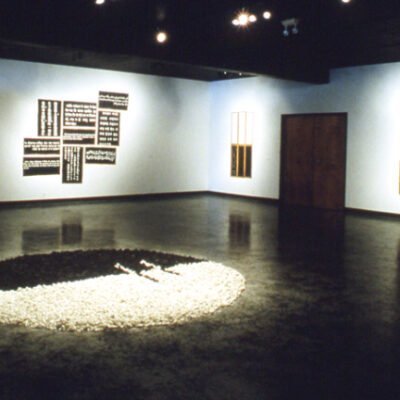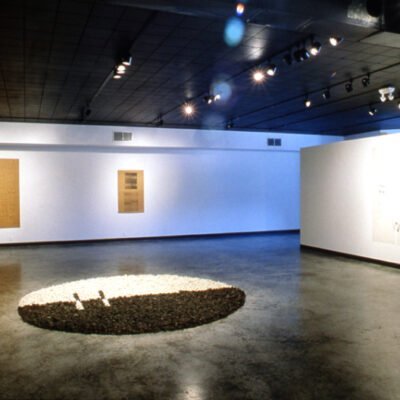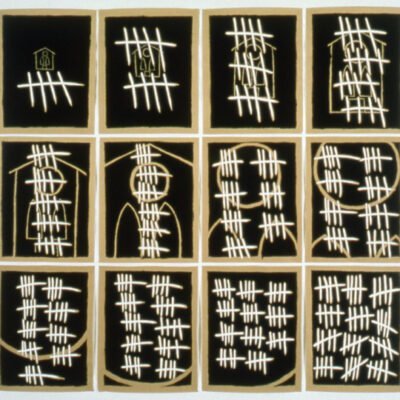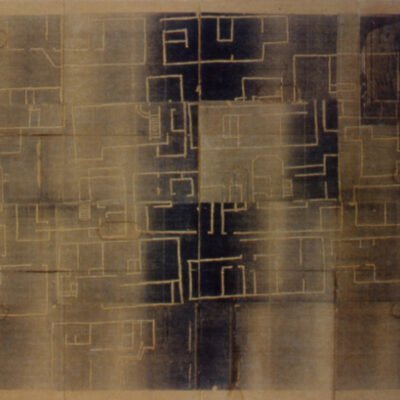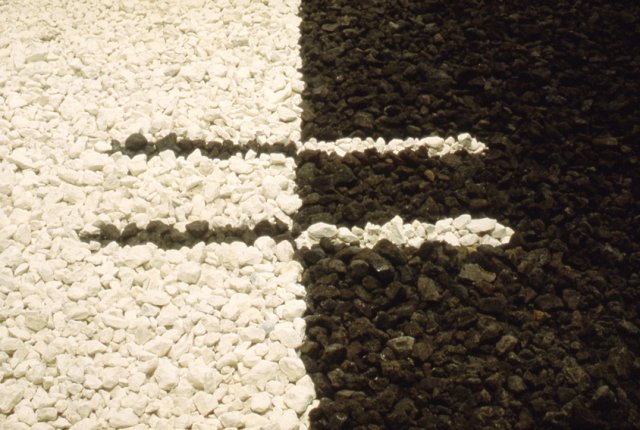
Annette Lawrence | CON/Text
Annette Lawrence created resonant imagery from deceptively simple materials: brown paper, glue, black and white-paint, chips of limestone and lava rock, and in some works, her menstrual blood. Lawrence chose to work on humble brown paper for its color of earth and skin and its unassuming warmth. When painted, the brown paper ground transformed into a more substantial material, resembling bark or fabric.
Lawrence’s drawings on paper, on the walls and in rock on the floor, referred to the marking of time and the ways that language and simple mathematical signs can generate multiple meanings. Lawrence once taught math and was fascinated with its abstract language. She employed algebraic symbols, calendrical dates, spirals, and grids to release a stream of formal associations to African, early modernist, minimalist, and conceptual art. Lawrence syncopated numbers, symbols, and counting marks to order time and space. What appeared to be Kuba cloth patterns in several works were actually the repeated floor plans of each home in which Lawrence has lived. Lawrence offered propositions on the state of race relations, generational continuity, and the situation of her own body and spirit within the proffered worldview.
